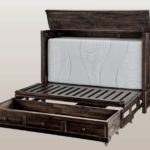Have you ever been curious about how the human body functions? Do you want to know why we do things and what drives us? The study of anatomy aids in our comprehension of the human body’s composition, structure, and function.
The eleven organ systems of the human body, organs, and tissues, and cellular anatomy and the research instruments utilized to study it are the two main subjects that will be thoroughly discussed in this article. We’ll also discuss how anatomy is employed in everyday life and provide study tools and materials. Let’s examine this fascinating subject together as we get started!
Contents
Overview of anatomy
The field of study known as anatomy examines the human body’s inner workings. Gross anatomy and microscopic anatomy are the two main subfields. Muscles and organs are two examples of the human body’s gross anatomy that may be observed without a microscope.
Structures that benefit most from being examined under a microscope, such as cells and subcellular components, fall under the purview of microscopic anatomy.
Each of the eleven organ systems in the human body performs a specific task. These organs and systems regulate physiological parameters to keep the body running smoothly, a process known as homeostasis.
Eleven organ systems include the nervous system (brain, spinal cord), endocrine system (glands), musculoskeletal system (bones, muscles), reproductive system (ovaries, testes), integumentary system (skin), lymphatic/immune system (lymph nodes), respiratory system (lungs, trachea), digestive system (stomach, intestines), urinary system (kidneys, bladder), and sensory organs (eyes, ears).
Understanding our bodies and how they work requires understanding anatomy, which is crucial for regular life. With a firm grasp of anatomy, we can better keep ourselves healthy and spot potential problems before they worsen.
If you’re experiencing back pain, for instance, knowing the basics of bone structure can help you determine if it’s from poor posture or something more severe, like sciatica or a herniated disc.
We must learn about the human body and how it functions to understand ourselves better. You can hone your knowledge of anatomy now that so many great tools (interactive models and infographics, online courses, textbooks, etc.) are at your disposal.
Systems of the human body
The human body comprises eleven major organ systems, each working in tandem to preserve health and wellness. Let’s look at these systems and how our daily lives are impacted by each one.
The bones, cartilage, ligaments, and tendons comprise the skeletal system. It supports and protects our internal organs. Although the human skeleton contains 206 bones, it still allows us to move and be flexible. While joints connect bones to allow for mobility, ligaments serve as connectors between bones to provide support.
Tendons allow for various motions by facilitating the connection of muscles to bones. The skeletal system will enable us to maintain proper posture and perform everyday activities like walking and lifting objects.
The body may move in all directions because of the contraction and relaxation capabilities of the muscular system. When we swim or run, we can move our head, chest, arms, and legs thanks to our body’s more than 600 voluntary muscles. The muscular system helps regulate blood flow by contracting arteries as needed.
Finally, the circulatory system transports nutrients and oxygen from the lungs and digestive system to every cell in the body through blood vessels such as arteries, veins, capillaries, and lymphatic vessels.
When necessary, the circulatory system distributes white blood cells throughout our bodies to help control body temperature and ward off pathogenic microorganisms.
These 11 organ systems work together to create an integrated network that keeps us healthy and permits us to move freely in our surroundings.
Knowing anatomy helps us understand how these systems function together, enabling us to take better care of our bodies during healthy times (such as when exercising or dieting appropriately) and when we are unwell or injured.
Organs and tissues
- The fundamental components of anatomy are tissues and organs. Organs comprise several tissues, including muscle, nerve, connective, and epithelial tissue. Together, these tissues create organs that perform specialized roles in the body. Every organ is different from the others and has specific duties.
- For instance, the heart’s cardiac muscle cells contract rhythmically to move blood throughout the body. Alveoli, microscopic air sacs found in the lungs, remove carbon dioxide from the bloodstream, enabling oxygen to enter. For food molecules to be taken into the bloodstream, digestive enzymes secreted by gastric glands in the stomach break them down.
- Every organ system in the body depends on particular organs to function; it cannot work correctly or efficiently without these organs; organisms could be harmed by disease or trauma and cause serious health issues if they are not appropriately and promptly addressed.
- Anatomy is something that everyone should learn since it helps us understand how each organ works, which helps us take better care of our bodies every day.
- To achieve optimal wellness and health, more research into anatomy may yield new understandings of our bodies and how they interact.
- By understanding anatomical structures, we can gain more insight into how illnesses such as cancer and heart disease affect our bodies and how they differ from other ailments. Rich anatomical information and advice on properly caring for our bodies through diet, exercise, and lifestyle choices can be found on any website.
Cellular anatomy
In contemporary science, one of the most intricate and fascinating topics is the study of cellular anatomy. The study looks at the microscopic parts of living organisms and how they support the cycle of life.
The several types that comprise the human body, along with each one’s component elements and how they work together to create a functional organism, will all be covered in this section.
The human body comprises four main cell types: epithelium, muscle, nerve, and connective tissue. Epithelial cells protect the surfaces of organs, serving as barriers against infections or external substances.
They also secrete mucous or sweat, which protects our skin from harm. Muscle cells comprise specialized units called myofibrils, which contract in response to motor neuron input. Nerve cells serve as signal relays throughout the body and coordinate vital processes like breathing and digesting. The structural protein collagen, essential to the health of our blood vessels, tendons, ligaments, and other tissues, is produced by fibroblasts, which are present in connective tissue.
Every cell has organelles, which are components with specific functions in preserving the health and vitality of the cell. For example, ribosomes synthesize proteins required for numerous functions, including moving molecules into and out of cells, whereas mitochondria supply the energy needed to power cellular activity.
Hormones and neurotransmitters, which cause specific reactions in the bodily systems of an organism, are other means by which cells can communicate with one another.
Cell reproduction is necessary for growth and development because it allows a single parent cell to give birth to multiple generations of identical daughter cells through mitosis.
Because genetic information is accurately reproduced before being split into two daughter nuclei during this operation, each cell has its full complement of chromosomes. Additionally, depending on the proteins incorporated into their DNA sequences and the conditions in which they dwell, stem cells can differentiate into many types of cells. Specific genes are expressed by stem cells.
Lastly, DNA (deoxyribonucleic acid) is the master regulator of all biological processes, including the production of proteins. On the other hand, proteins perform complex tasks like aiding in food processing and digestion and providing our organs with the structural support they require to stay healthy throughout our lifetimes.
Once we understand these basic concepts, we can appreciate the complexity and beauty of the anatomical systems functioning within the human body!
Studying anatomy
Anatomy is a required course in medical school for those who want to be doctors or surgeons. Anatomy classes at colleges, medical schools, and other educational institutions employ lectures, dissections, and other interactive teaching techniques. The application of computer modelling and simulation in anatomical research has increased due to our growing understanding of how the human body functions.
Studying anatomy could give us a deeper understanding of the human body’s workings, leading to better judgments regarding our daily health. Gaining an excellent experience of how our bodies work empowers us to make better dietary decisions, preventative healthcare procedures, and lifestyle choices.
When we understand how the various organs function together, we can better understand why specific actions or behaviors may enhance or impair our overall health and well-being.
Anatomy is an essential subject for medical professionals for several reasons. Understanding anatomy is required to identify and treat various conditions, from minor cuts to catastrophic diseases. A solid understanding of anatomy is also necessary for invasive procedures like surgeries or examinations that require precise knowledge of various body parts.
Finally, but just as significantly, studying anatomy can help us appreciate how incredible the human body is—especially in light of how intricate it is compared to other living creatures! Respect for anatomy is the starting point, and learning more about its intricacies can open up new vistas for understanding and knowledge that go much beyond what we already know about ourselves!
Conclusion
A thorough grasp of anatomy is necessary for both laypeople and medical professionals. Understanding the complexity of the human body and how its various organs, tissues, and cells interact to maintain our health is essential for survival. Studying anatomy helps us better understand our bodies and can also help us take better care of them.
Anatomy is a crucial component of medical education since it forms the basis for medical diagnosis and therapy. It might bring us new insights and educational opportunities, allowing us to appreciate the nuances of our physical characteristics. Today, anyone may learn more about this fascinating topic by accessing various educational materials online.
Thanks to recent technology breakthroughs like 3D imaging, anatomy knowledge is more relevant than ever. These developments make it possible for scientists to study organ structures and cell properties in a way that has never been possible before, which could lead to novel treatments for illnesses that were previously incurable or challenging to identify or manage.
It is clear that learning about anatomy is essential if we want to comprehend better who we are—our bodies’ strengths and weaknesses—and be able to make wise choices regarding our health in the now and the future. We strongly advise all readers interested in this topic to use the resources available!










